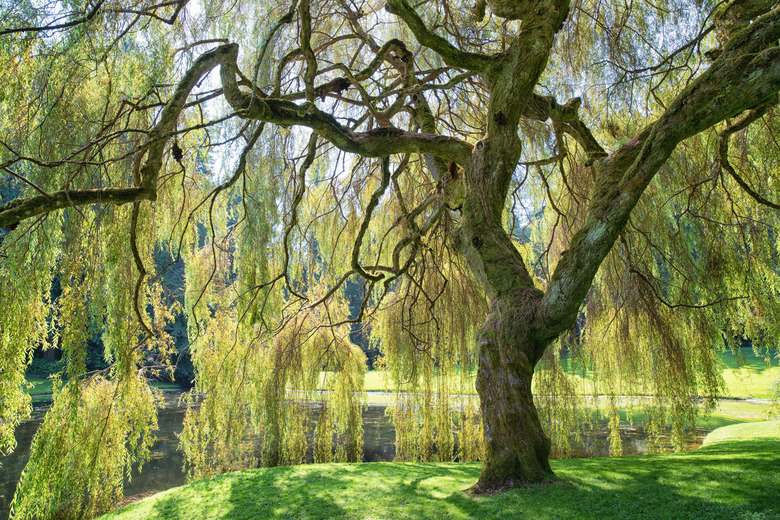Problems With Weeping Willow Trees
We may receive a commission on purchases made from links.
It's easy to get drawn in by the romantic, draping branches of the weeping willow tree (Salix babylonica), but don't be deceived by its stunning good looks. The weeping willow has its share of issues that can make it a problematic addition to some properties. Understanding those issues can help you decide if it's worth the trouble or if you want an easier tree to add beauty and shade to your home.
Long, Shallow Roots
Long, Shallow Roots
Weeping willows are large, fast-growing trees, so you need ample space on your property to accommodate the growth. They can grow to be 30 to 50 feet tall with a spread of 30 to 50 feet. Even if your property can accommodate the tree, what goes on underground could be an issue. Weeping willows have long, shallow, aggressive roots that can reach up to three times the distance from the trunk to the canopy's edge.
These wide-spreading roots can cause serious issues underneath the ground. If they're anywhere near your home, sheds, sidewalks, or other structures, they can cause damage to them. They can also infiltrate underground water and sewer lines, and they can affect any underground utility lines, like gas lines and electrical lines. Any of these scenarios result in costly damage. For this reason, weeping willows usually aren't recommended for residential properties. They are better for locations near water far from any structures or underground lines.
Susceptible to Diseases
Susceptible to Diseases
Weeping willows are susceptible to several diseases. The diseases vary in severity, with effects ranging from blemishes that make the tree look unattractive to dieback and tree death. Spotting diseases early can help you save the tree and minimize the effects. Some common weeping willow diseases include:
- Crown gall.
- Black canker.
- Willow scab.
- Root rot.
- Powdery mildew.
- Rust.
- Tar spot.
Susceptible to Pests
Susceptible to Pests
The trees are also susceptible to pest infestations. Some of the pests can cause defoliation and stunt the growth of the tree. Pests to watch out for on a weeping willow include:
- Gypsy moths: The caterpillars of this moth often feed on the tree in May and June, causing defoliation and weakening the tree. This can make it easier for other diseases and pests to attack the tree.
- Bagworms: Look for 2-inch silk bags on your weeping willow as a sign of bagworms. They eat the leaves and twigs, leading to defoliation and stunted growth.
- Willow leaf beetles: These beetles are tiny, measuring under 1/5 of an inch long with a metallic greenish-blue hue. They munch on leaves, turning them into skeletons. You'll typically see clusters of the beetles starting in late May.
Branches That Break Easily
Branches That Break Easily
The delicate, romantic look of weeping willow trees isn't just a facade. The branches are fairly brittle and can break easily. They're especially susceptible to breaking during storms or if they're covered with ice. Broken branches can be dangerous and create a messy situation.
Even without bad weather conditions, a weeping willow demands more care than some trees. They shed little twigs and leaves regularly, so the grass beneath the tree will either look messy or you'll need to give your rake regular workouts to keep it clean.
